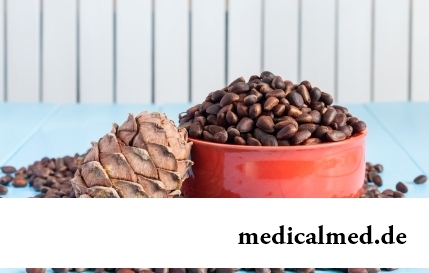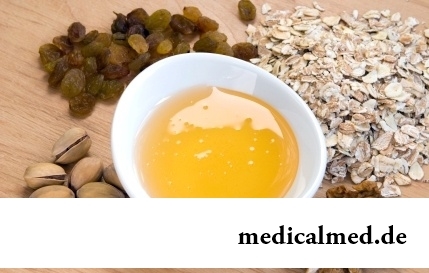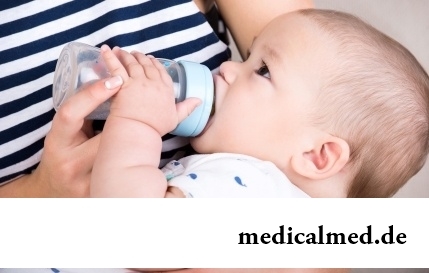





Kombispazm
Application instruction:
Kombispazm – the combined non-steroidal anti-inflammatory drug (NPVS), renders anesthetic, febrifugal, spasmolytic, myotropic and cholinolytic action.
Form of release and structure
Dosage form – tablets No. 10 and No. 100.
Content of active ingredients is to 1 tablet:
- Paracetamol – 0,5 g;
- Dicyclomine a hydrochloride – 0,02 g.
Indications to use
Kombispazm's use is shown for reduction or stopping of a pain syndrome of various genesis:
- Headache;
- Renal colic;
- Dentagra;
- Radiculitis, neuralgia, mialgiya;
- Rheumatic pain;
- Algomenorrhea.
Contraindications
- Glaucoma;
- Myasthenia;
- Disturbance of passability of urinary tract;
- Tachycardia;
- The expressed renal failures and/or a liver;
- Breastfeeding period;
- Age up to 7 years;
- Hypersensitivity to drug components.
With extra care it is necessary to appoint Kombispazm at cardiovascular insufficiency, intestinal impassability, a stenosis of peloric department, ulcer colitis, disturbances of functions of kidneys and/or a liver, a high-quality hyperbilirubinemia, the increased prostate.
Route of administration and dosage
Pill is taken inside, washing down with enough water.
The dose and frequency rate of reception are appointed by the doctor on the basis of clinical indications.
The recommended dosing has age restrictions:
- Patients are more senior than 15 years: on 1-2 tablets 1-4 times a day. Treatment should be begun with 4 tablets a day, for achievement of clinical effect increase in a dose to 8 tablets is allowed (on condition of lack of side effects);
- Children of 7-13 years: on 1/2 tablets 1-2 times a day;
- Children of 13-15 years: on 1 tablet 1-3 times a day.
The maximum daily dose of paracetamol for children should not exceed 0,15 g on 1 kg of weight of the child, for adults – 12 tablets, or 6 g.
Drug should be accepted not more often than 1 time at 4 o'clock.
Side effects
Kombispazm's use can become the reason of side effects:
- Allergic reactions: urticaria, skin rashes, erythema;
- Cardiovascular system: tachycardia, arrhythmia, bradycardia;
- Others: the complicated swallowing, dryness in a mouth and thirst, a lock, accommodation disturbance, increase in intraocular pressure, expansion of pupils, a hyperemia and a xeroderma, the complicated urination; seldom – fever, confusion of consciousness, a leukopenia, an agranulocytosis, thrombocytopenia, a neutropenia.
Reception of high doses during the long period and overdose of drug can cause toxic damage of a liver. Clinical signs of overdose are nausea, vomiting, pallor of skin, an abdominal pain, anorexia. There is an expressed change of laboratory indicators of function of a liver: increase in concentration of bilirubin and activity of liver enzymes, decrease in level of a prothrombin.
Emergence of rashes on a body of the patient demands immediate drug withdrawal.
Special instructions
Use of drug can aggravate a gastroesophageal reflux.
At emergence of the undesirable phenomena against the background of reception of low doses of Kombispazm or lack of therapeutic action after 2 weeks of use, drug should be cancelled.
During use of drug it is necessary to be careful when working, the psychomotor reactions and special attention depending on speed, including at control of vehicles and mechanisms.
Medicinal interaction
Kombispazm can cause converse effect of the means applied to treatment of glaucoma and motility of a digestive tract (Metoclopramidum).
Increase in anticholinergic effect of drug happens at a concomitant use of benzodiazepines, antihistaminic, antipsychotic (Meperidinum) means, monoamine oxidase inhibitors, sympathomimetics, an amantadina, antiarrhytmic drugs І a class, narcotic analgetics, tricyclic antidepressants, nitrites and nitrates.
Strengthening of hepatotoxic effect of paracetamol causes a combination to alcohol, anticonvulsants, barbiturates, rifampicin.
Against the background of the increased intraocular pressure Kombispazm's use along with glucocorticosteroids constitutes danger.
Antacids worsen absorption of anticholinergics, it is necessary to avoid this combination.
Drug suppresses secretion of hydrochloric acid in a stomach, it needs to be considered at treatment of an achlorhydria or a laboratory research of secretion of a stomach.
Terms and storage conditions
To store at a temperature of 15-25 °C. To protect from children.
Period of validity – 2 years.
The most rare disease – a disease the Kura. Only representatives of the tribe Faure in New Guinea are ill it. The patient dies of laughter. It is considered that eating of a human brain is an origin of a disease.

Heart disease and blood vessels lead to disturbance of blood supply of bodies and fabrics that involves failures in their works...
Section: Articles about health
The advantage of swimming for the person is so high that this sport is not only the most popular, but also is widely applied in medicine and rehabilitation processes. If you look for for yourself the occupation allowing pleasantly and to spend time, then swimming with advantage...
Section: Slideshow
Household skills which to us so diligently imparted in the childhood it appears, not always bring only benefit. According to results of the last researches, some habits which for a long time were considered useful and even necessary can become the reason of serious indispositions. Here only seven the most widespread of them....
Section: Articles about health
Striya (extension) are the defects of skin having an appearance of direct or wavy strips from 1 to 10 cm long and 1-5 mm wide. In the majority with...
Section: Articles about health
Wood louse – the ordinary-looking unpretentious plant extended in all territory of our country. It quickly expands, and sometimes fills sites, bringing a lot of chagrin to gardeners. Perhaps, they would be upset less if knew that the wood louse is the prices...
Section: Articles about health
All are familiar with cold, and practically everyone believes that he has sufficient knowledge and experience that correctly to treat it. In practice most of people makes mistakes in attempts to get rid of rhinitis, and divides numerous delusions it....
Section: Articles about health
The summer of this year in Russia was very ambiguous. Regions suffered from a merciless heat, from pouring rains, from times...
Section: Articles about health
Almost each of us during life faced dissatisfaction with own body. At such moments, as a rule, we begin to shame ourselves, urgently we go on the most rigid diet promising minus of 10 kg in a week, or we exhaust ourselves in the gym to полусм...
Section: Articles about health
The pine is one of the most widespread plants of our woods. Its needles and pitch not without reason called by "gallipot" were since ancient times used for strengthening of protective forces of an organism, treatment of avitaminosis, anemia and many other diseases. In recent years wide popularity was gained by the national medicines prepared from pinecones. "Fruits" of a coniferous tree contain a huge amount of vitamins, biologically active agents, antioxidants, phytoncides and other useful to...
Section: Articles about health
The hysteromyoma is diagnosed more than at a third of women 35 years are more senior. This high-quality new growth, which on early a stage...
Section: Articles about health
So, you resolved to lose weight. And now you try to understand what to begin with: from exercise stresses or a diet? And how to make that process of weight loss did not give you an inconvenience, and, on the contrary, brought joy?...
Section: Slideshow
Each woman has preferences in the field of use of those goods which help us to look good, feel young and effective. Besides: selection process of favourite perfume, shampoo or decorative cosmetics already lightens the mood and serves as a peculiar stress medicine. Happens very offensively when the acquired perfumery and cosmetic products not only do not meet our expectations, but also becomes the reason of problems with health. Sources неприятн...
Section: Articles about health
Many parents of children at the age of 2-4 years face excessively whimsical behavior of the child. The kid exhausts constant crying...
Section: Slideshow
For anybody not a secret that our country is one of the most "drinking" in the world. At clear understanding that the use of hard alcoholic drinks – occupation extremely harmful, most of Russians belong to alcoholism with unjustified loyalty. These...
Section: Articles about health
Let's begin with the fact that a separate illness which is called "adjournment of salts", just does not exist. In practice this household name of disbolism leading to development of a number of diseases. Pathological process consists that in an organism there is an accumulation of salts of uric acid (as a rule, owing to failure of a water salt metabolism or insufficiently effective work of secretory system)....
Section: Articles about health
Zone hypostases under eyes - very widespread problem giving to people is a lot of inconvenience. Hypodermic fabric in these parts having...
Section: Articles about health
Each of us repeatedly noticed that the people having the same passport age are sometimes not similar on one-years at all. One at the age of 40-45 years already looks almost an old man, and another and in 60 is young, vigorous and full of life. The matter is that state нашег...
Section: Articles about health
Bees – really unique beings. Practically all products of their life activity are used by the person. Since the most ancient times medicinal properties of honey and other substances received in the course of beekeeping are known. The fact that all these products are recognized not only national, but also official medicine is especially significant. About influence and routes of administration of bee "drugs" the speech in this article will also go....
Section: Articles about health
Musicotherapy – a treatment method which caused and causes a set of a controversy concerning its efficiency. However the facts are relentless:...
Section: Articles about health
One of the useful properties presented to the person by the nature is ability to feel fear. This ability is designed to signal about approach of a dangerous situation and to help to avoid in advance it to keep life. However if the fear is persuasive and not about...
Section: Articles about health
Producers of milk mixes for children assure: mixes are ideally balanced and adapted for needs of babies. If mother should raise artificially the kid owing to serious problems with health, to do nothing – it is necessary to feed with substitutes of milk. However pediatricians note that not seldom women without good reasons refuse feeding of the child a breast and pass to milk mixes. Common causes of such decision – the aspiration to leave quicker...
Section: Articles about health
The winter swimming in open reservoirs called in our country by "winter swimming" – officially recognized sport and one of the ek...
Section: Articles about health
More than a half of the married couples which faced prostatitis – leave. The new broadcast "Female View of Prostatitis" will help to learn – whether you have or your relatives problems....
Section: Articles about health
A lot of things depend on a condition of a backbone in a human body, a backbone - not only a support for a body, it also a receptacle for a spinal cord, that is why malfunctions with a backbone are so dangerous. To treat rachis diseases very difficult and long, it is much simpler and more correct not to bring to a disease. Conforming to the rules provided in this article it is possible to avoid the majority of the problems connected with a backbone including those which are considered to be age, but a cat...
Section: Articles about health
The sclera and mucous membrane of an eye are intensively supplied with blood vessels which problem - to sate nervous tissues of body to a pitata...
Section: Articles about health
Each failure in work of bodies and systems of a human body is, as a rule, shown by the whole complex of symptoms. In particular, malfunctions with health often cause emergence of cosmetic defects in the form of rashes on a face. Experienced doctors know that локализац...
Section: Articles about health
From the failure of work of immune system which is shown in the form of an allergy, statistically, more than 40% of the population of the globe suffer. In most cases pathological reactions cause the substances which are contained in food stuffs, hair of animals, medicines, goods of household chemicals, cosmetics, pollen of plants, etc. On the one hand, the disease such is capable to spoil quite thoroughly to the person life....
Section: Articles about health
